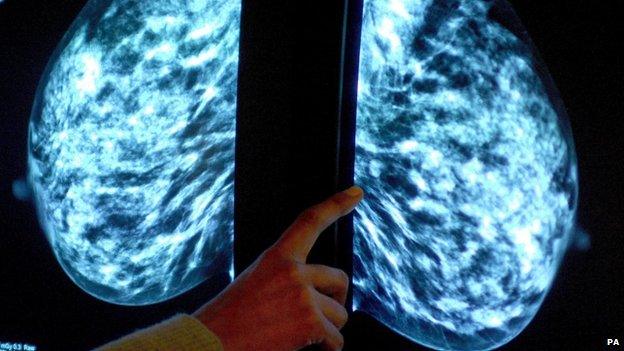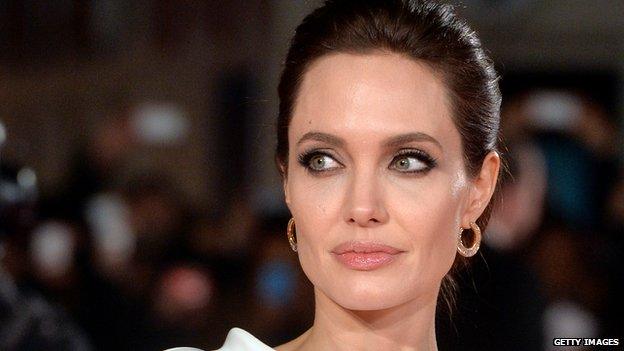Breast cancer: The risks and treating the disease
- Published

1Xtra presenter Claira Hermet has told Newsbeat about her decision to have a double mastectomy after loosing her mum and sister to breast cancer.
Doctors have told her there is an 85% chance she will develop breast cancer as she has inherited a mutation in her BRCA 1 gene.
But are you at risk and what can you do reduce your chances of contracting it?
Katherine Woods from Breast Cancer Campaign, external explains.
Will I get breast cancer?

"The risk of a woman developing breast cancer in the UK is one in eight.
"That's about 50,000 women a year. Women are far more likely to develop the disease, but it does affect men too.
"Around 350 men a year are diagnosed with breast cancer in the UK.
"Gender, age and family history are the three most important risk factors. The older you get, the greater risk of getting breast cancer.
"More than 80% of breast cancers are diagnosed in women over 50, so it's a lot more common for women who have gone through the menopause.
"In terms of family history, some have a higher risk of getting breast cancer.
"But not everybody with a family history will have that high risk. One in five women that get it have a family history of the disease."
How can I reduce the risk?
"Women who have family history and have a confirmed higher risk can opt to have risk-reducing surgery.
"The most common type is a double mastectomy. A mastectomy removes tissue from both breasts. It reduces the risk by up to 90%.
"Removing the ovaries can also reduce risk by around 50% in younger women.
"In terms of lifestyle there are three things people can do to reduce their risk. Cut down on alcohol, be a healthy weight and to get 30 minutes of exercise five times a week."
What is a double mastectomy?

Angelina Jolie has also had a double mastectomy
"It's the removing of breast tissue from both of the breasts.
"For a lot of women there is an option to have reconstruction at the same time as they have surgery.
"So it doesn't necessarily mean that the entire breast and nipple are taken.
"This surgery can reduce the risk of getting breast cancer by 90%.
"But a risk-reducing mastectomy still leaves part of the chest wall behind and actually breast cancer can still develop in those tissues which is why we can't say it reduces the risk by 100%."
How do I check?

"It is really important to check whether you have a high risk or not.
"Checking to see if you can see or feel anything different.
"There are numerous signs and symptoms. It's not just a lump.
"You might feel pain in one or both of your breasts, or even as up as far as your armpit.
"You might have a rash or discharge bleeding around the nipple. You could also have changes in the surface of the skin."
Follow @BBCNewsbeat, external on Twitter and Radio1Newsbeat, external on YouTube